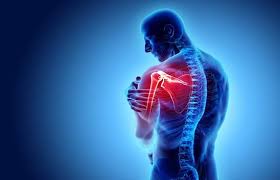Nerve pain is a common yet often debilitating issue that athletes may face during their training and competition. Understanding the mechanisms behind nerve pain, its impact on athletic performance, and effective strategies for prevention and treatment are crucial for athletes to maintain their physical well-being and performance levels. This article delves into the world of nerve pain in athletes, exploring its causes, diagnosis, treatment options, and the importance of proper training and conditioning in mitigating and managing this challenging condition.
1. Introduction to Nerve Pain in Athletes
Understanding Neuropathic Pain in Athletes
Neuropathic pain in athletes can be a real buzzkill, like stepping on a Lego brick in the dark. It’s that sharp, shooting discomfort that can make training feel more like torture. Understanding how Neuropathic pain works is key to tackling it head-on.
Impact of Nerve Pain on Athletic Performance
Neuropathic pain is like having a pesky little goblin poking you with a stick during your workout. It can seriously mess with your performance, from slowing you down to forcing you to sit on the sidelines. Dealing with Neuropathic pain is crucial for athletes looking to bring their A-game.
2. Common Causes of Nerve Pain in Athletes
Overuse Injuries and Neuropathic Pain
Overdoing it at the gym or on the field can be a recipe for nerve pain disaster. Think of it like trying to fit a square peg into a round hole — eventually, something’s gonna give. Overuse injuries are a common culprit behind Neuropathic pain in athletes.
Traumatic Injuries and Nerve Damage
Traumatic injuries are like the plot twists in a sports movie — unexpected and sometimes downright painful. When athletes take a hard hit or suffer a fall, nerves can get caught in the crossfire, leading to nerve damage and lingering pain that just won’t quit.
3. Strategies for Preventing Nerve Pain in Athletes
Proper Training Techniques and Injury Prevention
Mastering proper training techniques is like learning the secret handshake to avoid nerve pain. By taking steps to prevent injuries before they strike, athletes can keep Neuropathic pain at bay and stay in the game for the long haul.
Importance of Rest and Recovery
Rest and recovery are like the superhero duo swooping in to save the day when Neuropathic pain rears its ugly head. Just like Batman needs his downtime to fight crime, athletes need to prioritize rest to give their nerves a chance to chill out and heal.
4. Diagnosis and Assessment of Nerve Pain in Athletes
Symptoms and Signs of Neuropathic Pain in Athletes
Spotting nerve pain in athletes is like finding Waldo in a sea of stripes — tricky but not impossible. From tingling sensations to shooting pains, recognizing the symptoms and signs can help athletes and healthcare professionals pinpoint the problem and get to work on a solution.
Diagnostic Tests and Imaging for Nerve Pain
When in doubt, whip out the big guns — diagnostic tests and imaging can help uncover the root of Neuropathic pain woes. Think of it like using a magnifying glass to solve a mystery. By getting a closer look at what’s going on inside, athletes can get on the right track to conquering Neuropathic pain once and for all.
5. Treatment Options for Nerve Pain in Athletes
Medication and Pain Management:
When it comes to treating Neuropathic pain in athletes, medication and pain management play a crucial role. Doctors may prescribe pain relievers, anti-seizure medications, or antidepressants to help manage symptoms and improve quality of life.
Physical Therapy and Rehabilitation:
Physical therapy and rehabilitation are key components of treating Neuropathic pain in athletes. These programs focus on strengthening muscles, improving flexibility, and promoting proper body mechanics to alleviate pain and prevent future injuries.
6. Rehabilitation and Recovery for Athletes with Nerve Pain
Rehabilitation Programs for Neuropathic Pain:
These programs often include targeted exercises, manual therapy, and education on injury prevention.
Return to Play Protocols:
Athletes with Neuropathic pain must follow structured return-to-play protocols to ensure a safe and gradual reintroduction to their sport. These protocols help athletes regain confidence, rebuild strength, and minimize the risk of re-injury.
7. Importance of Proper Training and Conditioning
Role of Strength and Conditioning in Preventing Neuropathic Pain:
Proper strength and conditioning are vital in preventing Neuropathic pain in athletes. A strong and balanced body can help reduce the risk of nerve compression and injuries, allowing athletes to perform at their best without discomfort.
Cross-Training and Injury Prevention Techniques:
Cross-training and injury prevention techniques are valuable tools for athletes looking to avoid Neuropathic pain. Incorporating varied activities, proper warm-ups, and adequate rest can help athletes maintain overall fitness and reduce the chances of developing nerve-related issues.
8. Future Directions in Managing Neuropathic Pain in Athletes
Advancements in Neuropathic Pain Treatment:
Advancements in Neuropathic pain treatment, such as targeted therapies, minimally invasive procedures, and regenerative medicine, offer promising options for athletes seeking relief. These cutting-edge approaches aim to improve outcomes and shorten recovery times.
Research and Innovations in Athlete Injury Management:
Ongoing research and innovations in athlete injury management continue to drive progress in the field of sports medicine. By exploring new technologies, therapies, and training methods, experts strive to optimize recovery, enhance performance, and keep athletes in the game for the long haul. With a proactive approach to addressing nerve-related issues, athletes can optimize their performance, minimize the risk of injuries, and stay on the path to long-term athletic success.
